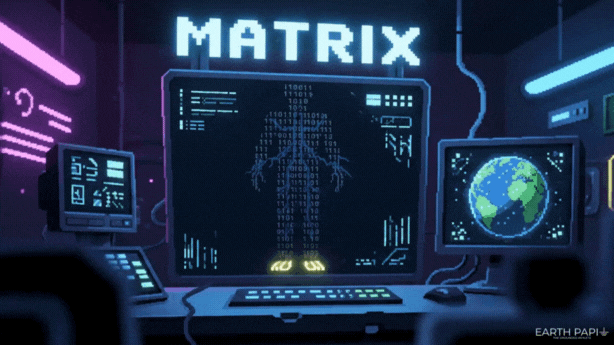The Matrix - Primer
This is how I define the matrix in the Earth & Water Books:
The Matrix is the body’s ubiquitous biological infrastructure. It exists at both cellular and systemic levels, forming a continuous semiconductive network built from proteins, structured water (including Exclusion Zones and Coherence Domains), and ground substance.
Structural Continuity
The Matrix extends from the extracellular environment into the deepest layers of the cell. The extracellular matrix (ECM) links directly to the intracellular cytoskeleton, which includes actin filaments, microtubules, and intermediate filaments. Integrins, transmembrane receptors, form the critical bridge between ECM and cytoskeleton, transmitting mechanical and chemical signals. LINC (Linker of Nucleoskeleton and Cytoskeleton) complexes span the nuclear envelope, tying the cytoskeleton to chromatin and other nuclear structures. This architecture ensures that signals, forces, and energetic changes outside the cell can propagate all the way to the genome without interruption.
Electrical Properties
Collagen networks and connective tissue ground substance act as biological conductors, capable of storing and moving both electrons and protons. Their semiconductive character enables redox reactions, energy transfer, and the modulation of oxidative stress. In this sense, the Matrix is an electrical landscape.. Able to convert electrical events into biochemical cascades and biochemical changes back into electrical form.
Water Organization
Water adjacent to proteins and membranes organizes into structured layers through hydrogen bonding, producing regions with altered dielectric properties. These layers facilitate rapid proton transfer, making water an active component of the Matrix’s communication and energy-transfer functions.
Grounding and Light
Direct connection to the Earth supplies the Matrix with electrons, maintaining redox balance and neutralizing excess free radicals. Light, particularly within specific wavelengths, interacts with structured water and protein complexes, charging and energizing the system further. The Matrix is sustained and tuned by two fundamental environmental inputs: the Earth and the Sun.
Physiological Role
The Matrix functions as a redox regulatory system and bioenergetic infrastructure. It supports energy production, inflammation resolution, and electrical homeostasis across tissues. Its semiconductive, integrated nature makes it the body’s primary medium for rapid, high-fidelity transmission of information and energy.
In essence:
The Matrix is not simply structural scaffolding. It is a semiconductive, dynamic, and responsive network.. An electrical and informational fabric woven through the entire organism.

